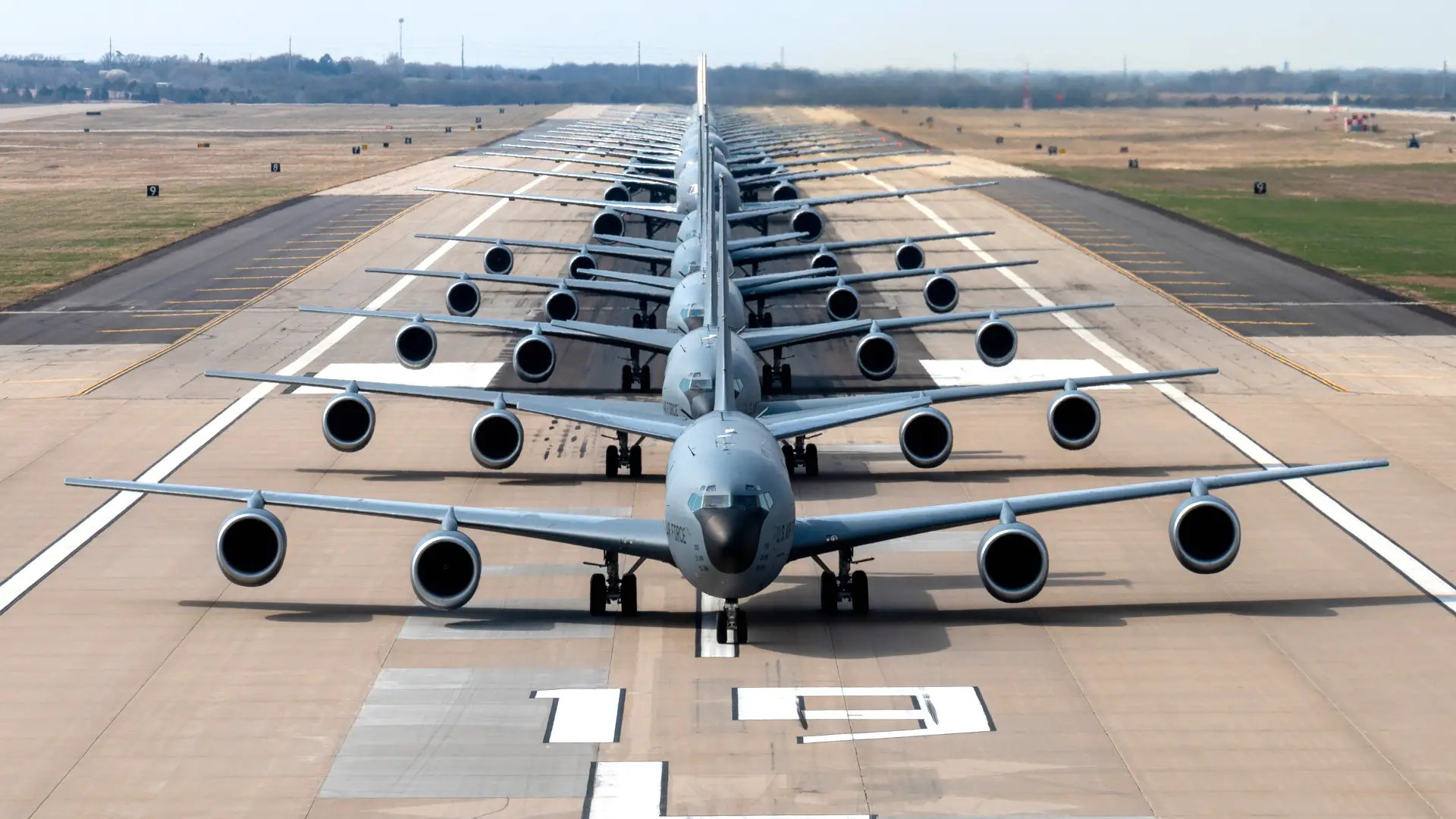The U.S. Air Force is set to test new autonomous capabilities for its KC-135 aerial refueling tanker fleet that could help reduce crew workload and improve their effectiveness, and maybe even eliminate the need for them altogether in the future. The service is also still looking to demonstrate a KC-135 configured as an aerial launch platform for drones, maybe as early as this summer.
Air Force Gen. Mike Minihan, head of Air Mobility Command (AMC), shared new details about when the future might hold for the venerable KC-135 at a media roundable that The War Zone and other outlets attended on the sidelines of this year’s Air & Space Forces Association Warfare Symposium on Wednesday. Autonomous flight technology company Merlin is supporting the KC-135 autonomy project and provided additional information to us directly, as well as in a press release.
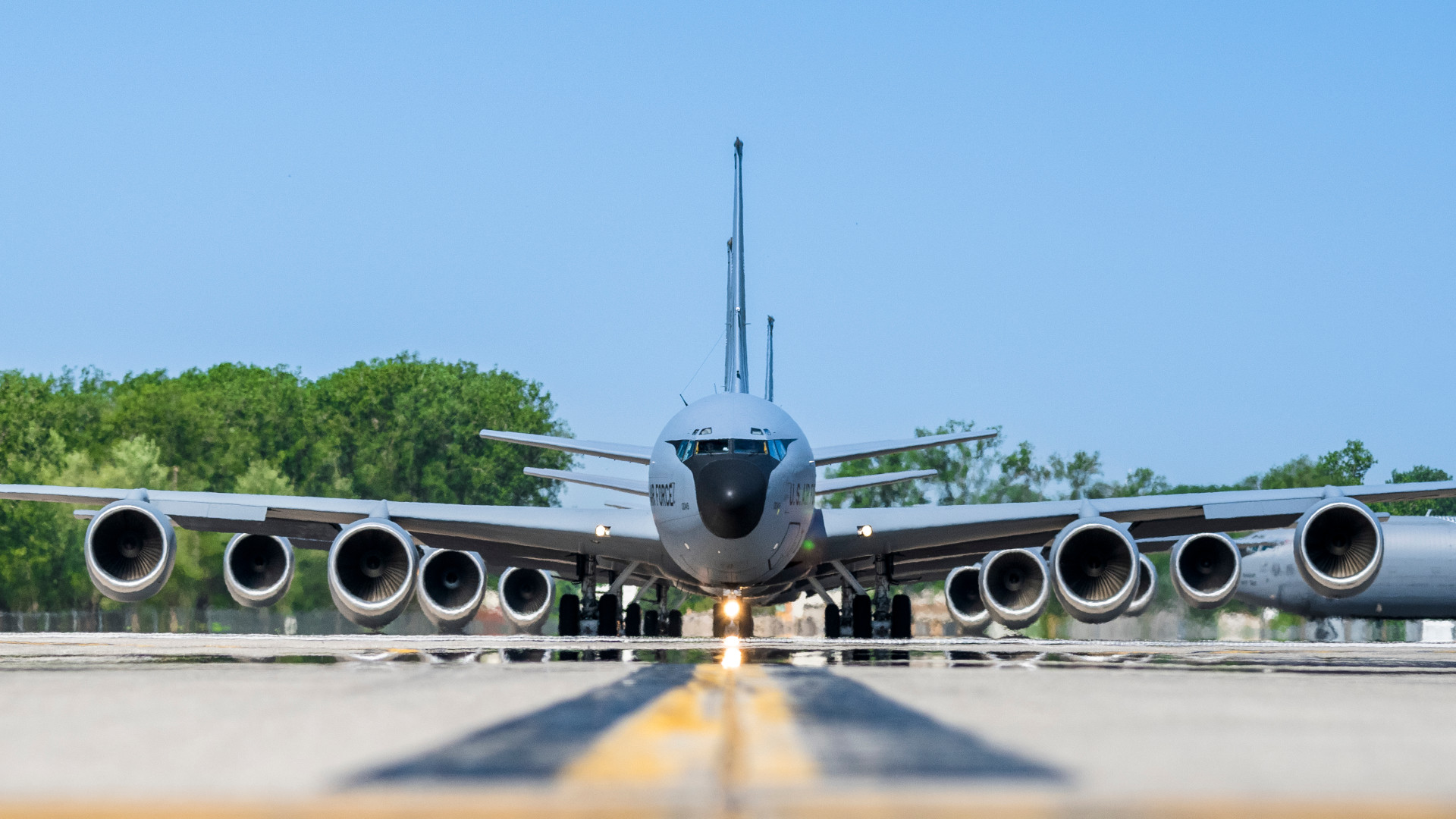
New Autonomous Capabilities For The KC-135
Merlin is “working on … the ability to take existing airframes [and] put autonomy in them,” AMC head Gen. Minihan explained on Wednesday. “Then we can look at what what crews can do and what [the autonomy system] … can [do to] take the load off of the human.”
“In collaboration with Air Mobility Command (AMC) and Air Force Materiel Command (AFMC), Merlin will design, integrate, test, and demonstrate aspects of the Merlin Pilot on the KC-135 Stratotanker for the first time,” Merlin said in its press release.
Merlin Pilot is a scalable software-driven autonomy package designed to be readily integrated into different types aircraft to help automate a host of functions. Merlin has demonstrated variations of this system on other types of aircraft in the past, including full pilot-optional flight capability. The company previously announced it would be working to integrate some of these autonomous capabilities onto an Air Force C-130 Hercules aircraft, but the exact status of that effort is unclear.

“Merlin’s stepped approach first focuses on bringing aspects of the Merlin Pilot to [the] flight capabilities [on the KC-135] with the long-term goal of supporting fully unmanned aerial refueling operations,” the company told The War Zone. “We expect to have important progress on the C-130 project in the coming few months.”
“The reason I want that is because I want to free the human to do what only humans can do,” Gen. Minihan added at the roundtable yesterday. “Normally we have the demands of the mission up here and we have human performance down [here] … being the limiting factor. And we always bring the demands of the mission down. How can we raise human performance and maybe not do an adjustment down to here, but get to something more even. So, autonomy is a big part of that.”
As The War Zone has highlighted in the past, what is often described as ‘digital co-pilot’ technology, which is not new at this point, could help trim back the number of basic tasks pilots and other aircrew have to perform in flight. This, in turn, could help add extra margins of safety by reducing fatigue and lessening the potential for even simple, but potentially disastrous mistakes, especially during long-duration missions.
The line between increasingly more advanced automation of key tasks and pilot-optional operation has long thinning. In speaking yesterday, Minihan referred to his personal experience of flying in a pilot-optional Black Hawk helicopter, something the U.S. Army has been actively experimenting with as part of a project with Sikorsky (now a subsidiary of Lockheed Martin) that dates back years now.

“I sat in the backseat [of the Black Hawk], they handed me a tablet, I pushed a button, the engines started. Push another button, we flew 25 miles to another airfield, landed, [and] I push another button and the engines turned off,” Minihan said, adding that there were safety pilots onboard the whole time in case something went wrong.
The AMC boss also drew attention to the potential value of autonomous capabilities to support work his command has done on a concept of operations that could see aerial refueling tankers like the KC-46A Pegasus fly with just one pilot and one boom operator. The idea is that this could help stretch existing resources further to ensure adequate aerial refueling capacity is available during a future major conflict, such as one in the Pacific against China. Exploration of this skeleton crew concept has since expanded to the C-130 Hercules cargo aircraft.
Operating large aircraft with very small crews could present new risks, too, especially when it comes to safety issues stemming from the increased workload on individuals. These are exactly the kinds of issues AMC says it hopes to address through the introduction of new autonomous capabilities on the KC-135.
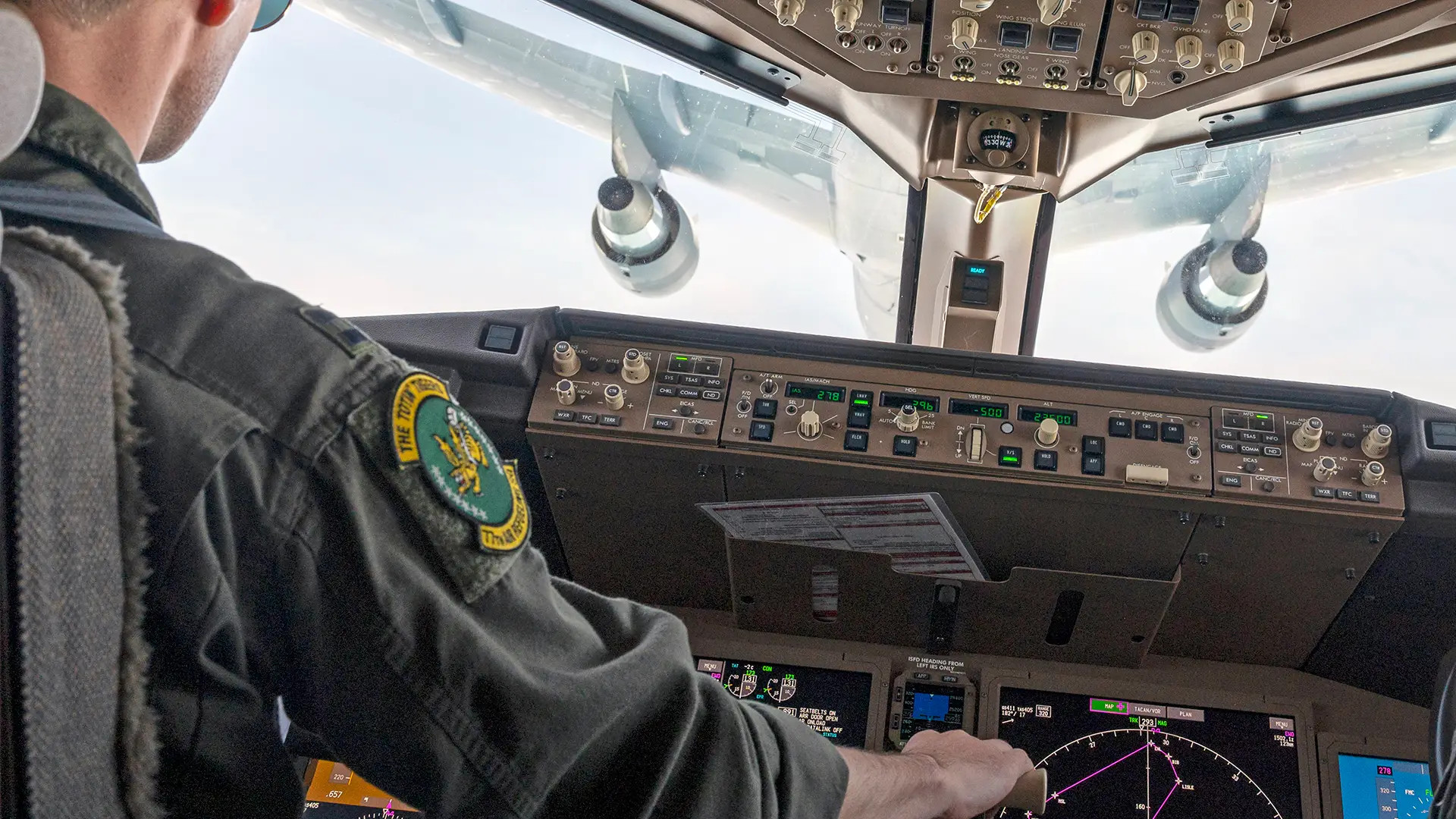
Merlin sees the integration of autonomous capabilities onto the KC-135 as a stepping stone to potentially allowing those aircraft, as well as other tankers, to operate in a completely crew-optional mode.
“A series of joint USAF-Merlin flight demonstrations will include basic air refueling operations, and showcase how its dual-use technologies can serve critical USAF missions,” according to the company’s press release. “As the system gains experience and trust, it will pave the way for autonomous uncrewed operations of the KC-135; an unprecedented new capability for AMC and the USAF.”
Questions remain about how exactly this would work, especially with the U.S. Air Force’s preferred boom refueling method, where a human boom operator has long been required to ensure a safe connection with the receiving is established. However, there has been years of work already to add increasing levels of autonomy to aerial refueling operations, including when using booms, including a demonstration by European aviation conglomerate Airbus last year. Autonomous aerial refueling capabilities are seen as particularly important to enable future advanced drone operations.

Just being able to conduct pilot-optional KC-135 sorties from one location to another as part of routine day-to-day non-combat operations could have cost-reducing and other benefits.
KC-135 Drone Mothership Demonstration Still Coming
Beyond adding autonomous capabilities to the KC-135 itself, AMC is still very interested in the idea of using these tankers to launch large groups of drones in flight. The command’s interest in this concept first emerged in a leaked memo from Minihan last year. That memo was centered on what the general said were critical steps the command needed to take to be prepared for a future high-end conflict in the Pacific against China, as you can read more about here.
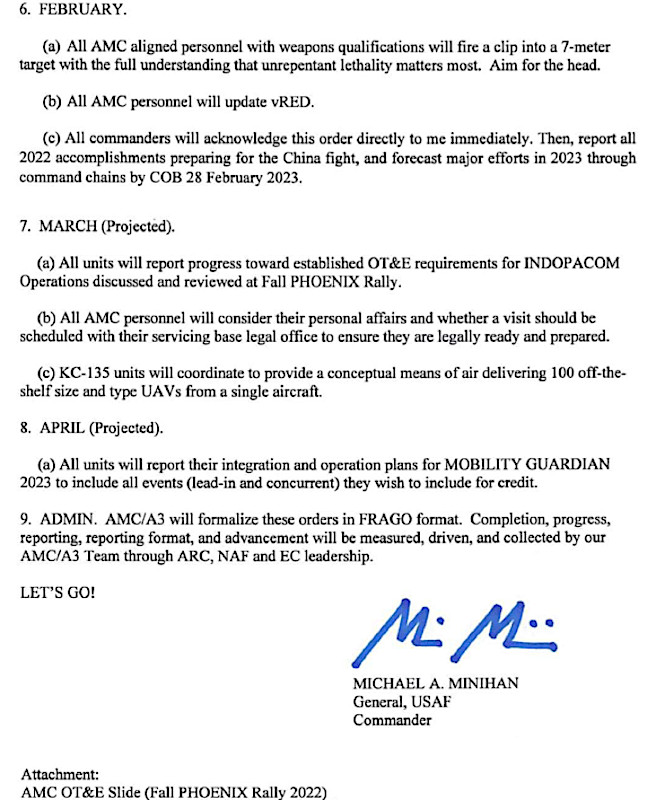
“We’re still aggressively pursuing the UAS option off of the KC-135,” Minihan said today. “I’ve got a new target on perhaps we’re going to do that off of some airlift platforms first, just because of some of the certification and the safety issues” that have been unconverted in the initial exploration of this capability for the KC-135.
“I think by the time we get to the Bamboo Eagle this summer [that] we’ll in July or August have something that we can, it might not be on a [KC-]135, but it will be on a platform … that’s significant,” the AMC head added.
Bamboo Eagle is a new series of large-scale Air Force-led air combat exercises that are focused squarely on preparations for a future major fight in the Pacific. The War Zone previously covered Bamboo Eagle 24-1, the first of these exercises, which concluded earlier this month, in detail, as you can find here.

Minihan’s view of the potential utility of drone-launching KC-135s is very much informed by Pacific conflict scenarios. Overall, he said today that he has “pretty high aspirations” for the concept.
“If you’re a KC-135, and you have something like that … I can shoot a decoy out. I can shoot something that can go take a rescue raft to a downed Airmen. I can shoot something that can take a battery to a soldier on an island that needs to get his radio or her radio up to speed,” the general said. “You know, I can do precision navigation timing. I can have something go down and look at the airfield that I’m about to land on and understand where the craters are, and if the airfield is serviceable.”
These notional roles and missions are in line with how Minihan described his ultimate vision for this aerial drone-launch capability for the KC-135 last year. They very much speak to broader expeditionary and distributed concepts of operations, known collectively as Agile Combat Employment (ACE), which the Air Force is has been developing in recent years and continues to refine. ACE is centered on the ability of Air Force units to make irregular deployments, on relatively short notice if need be, to an expanding number of locations globally. This includes remote and austere facilities, and potentially even forward sites without any traditional infrastructure. The core idea is to make it difficult for enemy forces to predict the movements of friendly forces and target them effectively.

With this in mind, giving units additional tools to support self-deployment operations and otherwise support themselves in forward areas has become a major focus area for the Air Force. If the concept proves practical, KC-135 loaded with drones that can be used to create mesh networks that provide additional and more resilient communications and data-sharing connectivity, help with combat search and rescue missions, aid in time-critical logistics missions, and scout out additional forward basing areas would be fully in line with the service’s future operational vision.
A KC-135 would be able help push those drones, which could be able to operate as fully networked swarms, but have limited range, into forward areas. The War Zone previously explored the benefits of this kind of drone mothership concept in detail as part of a case for transforming the U.S. Navy’s P-8 maritime patrol plane into a multi-role arsenal ship, as you can read more about here.
When it comes to using an air-launch drone capability on the KC-135 to deploy decoys, this reflects the expectation that U.S. aerial refueling tankers will be prime targets in any future major conflict. The Air Force has already been experimenting with allowing KC-135s and other tankers to control loyal wingmen-type drones to help provide additional layers of defense and general situational awareness of potential threats. Decoys launched from KC-135s could also be used to help clear pathways into forward areas for other friendly aircraft, too.
Stepping Stones to Next Generation Tankers
The Air Force is, of course, separately pursuing a new family of aerial refueling tankers and related capabilities as part of a program currently called the Next Generation Air-Refueling System (NGAS). The centerpiece of this effort is expected to be a still largely undefined advanced tanker aircraft that will be stealthy or otherwise more survivable than current generation types. Work on is ongoing now on a highly-efficient blended-wing body demonstrator aircraft that will hopefully fly in 2027 and could help inform NGAS, as well as other future developments.

Uncrewed tankers and other capability upgrades for existing fleets have also been discussed as part of NGAS. The KC-135 autonomy project “will help inform the planned Next Generation Air-Refueling System (NGAS),” Merlin said in its press release.
“I’m not looking to develop a fleet that has to handle every threat environment. There is an enormous amount of that NGAS … fleet that’s going to look a lot like the airplanes we have today, okay, that can operate at the permissive environment and semi-permissive,” Minihan explained at the roundtable this week. “And then there’s going to be a portion of the fleet that can get into … the high-end of semi[-permissive environments] and into the extreme threat areas.”
Minihan said the numbers of these tankers capable of operating in areas of “extreme threat” will “probably very small” and will “have exquisite capabilities.” The general said that this high-low capability mix will be essential for providing adequate aerial refueling capacity in the future without “bankrupting the Air Force.”
The hope is that the first new NGAS tankers will be in service by 2040, if not earlier.
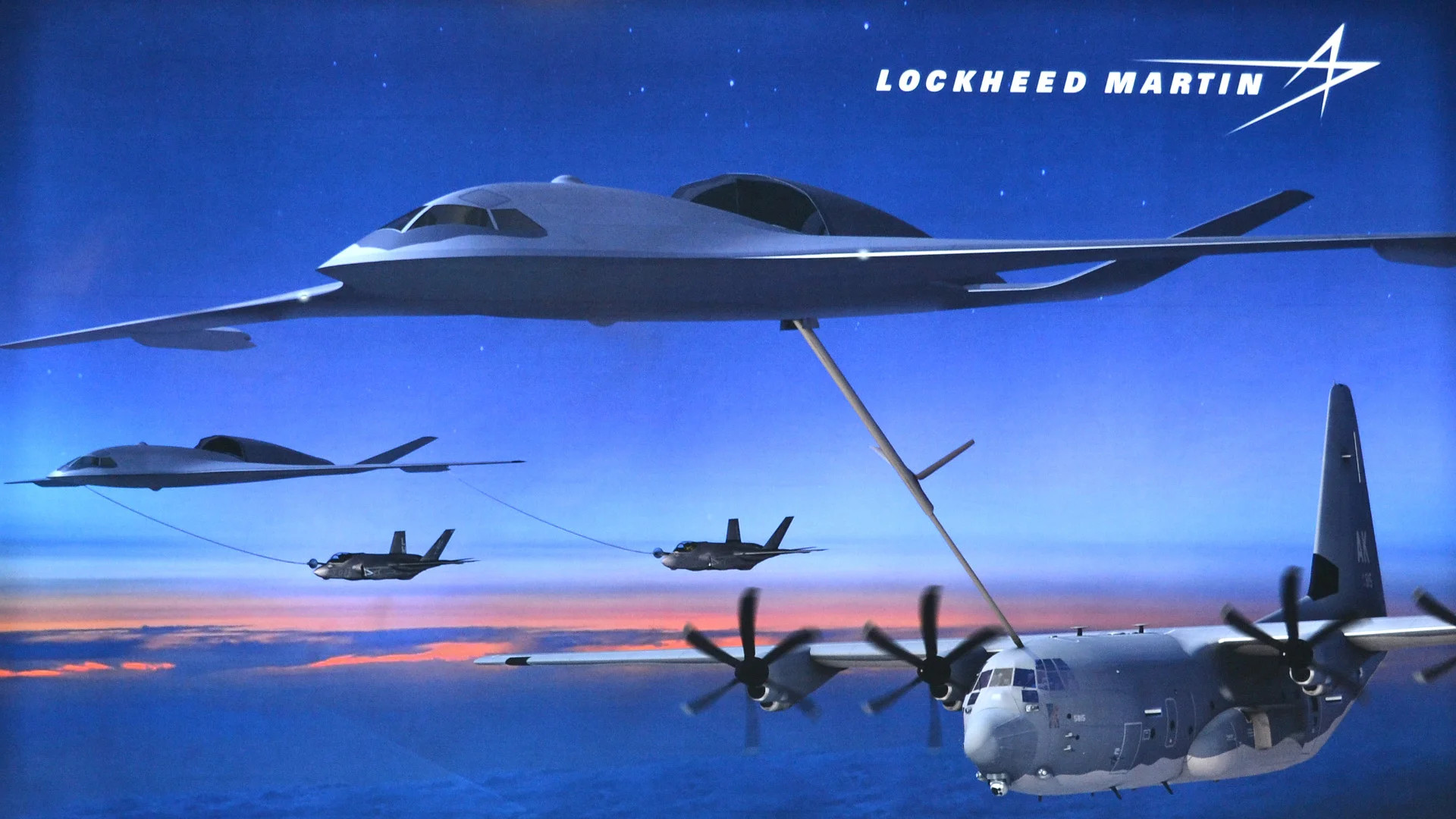
The head of AMC did not explicitly mention it at the roundtable on Wednesday, but Air Force has been increasingly make use of private aerial refueling contractors in the past year or so to support non-combat aerial refueling requirements. This, in turn, could help reduce the already significant strain on the service’s organic tanker fleets and free them up for higher priority missions.
As of March 2023, the Air Force had 365 KC-135, 24 KC-10, and 82 KC-46 tankers in service. The service is in the process of divesting the entire KC-10 fleet and has been retiring some of its KC-135s.
Right now, the Air Force’s expects to acquire a total fleet of at least 179 KC-46As. The service also plans to buy 75 additional new-production tankers, and has been openly talking about potentially just awarding an additional sole-source deal to Boeing for more KC-46As. The KC-46A fleet continues to be beset by a host of technical and other issues, especially with regard to the hybird 2D/3D Remote Vision System (RVS) that boom operators on those aircraft use to perform their job from the main cabin. A entire new RVS is in the works, development of which is currently not set to be completed until late 2025 at the earliest. It will then take time to integrate that system into the existing KC-46A fleet.

In the meantime, the Air Force is clearly looking at novel ways to squeeze more capability out of its existing tanker fleets through things like adding new autonomous and drone-launching capabilities to its venerable KC-135s.
Contact the author: joe@twz.com
